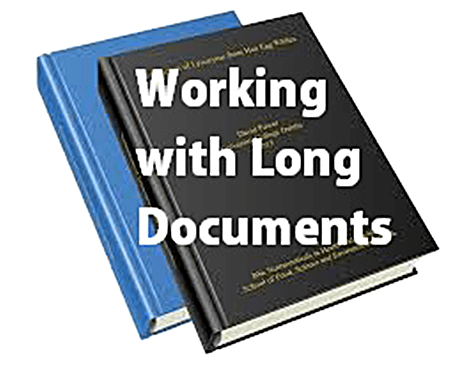Working with Long Documents

When documents grow longer and longer, it can be become increasingly difficult to see the overall structure of your thesis. There are three essential techniques, which you can use in different combinations, to keep the big picture in mind:
• Use the Document Map
• Use New Windows
• Use the Outline View
Document Map
it provides an interactive table of contents that remains visible as you work with your document. To move quickly from topic to topic in the document, you simply select headings listed in the document map… click here for details

New Windows
it provide separate views into your document, so that you can see and compare the content of separate sections at the same time, making comparisons and cross referencing between chapters quite easy… click here for details

Outline View
it allows you to work at a range of heading levels, for instance if you are trying to re-organise the sequence of topics in a chapter you can collapse the view so that it displays only topic headings. You can then quite easily move entire topics around each other. You can also rearrange the structure of your document, for instance to demote a topic to a sub-topic, so that your text is more logically organised…click here for details

The Document Map and Outline View
Both require that you make use of Heading Styles, as these identify and locate headings and sub-headings in your document. Heading Styles can be created, modified and applied by using Styles (tools for structured formatting) or by promoting and demoting text in the Outline View. Heading Styles are also essential for the automation of your table of contents.
